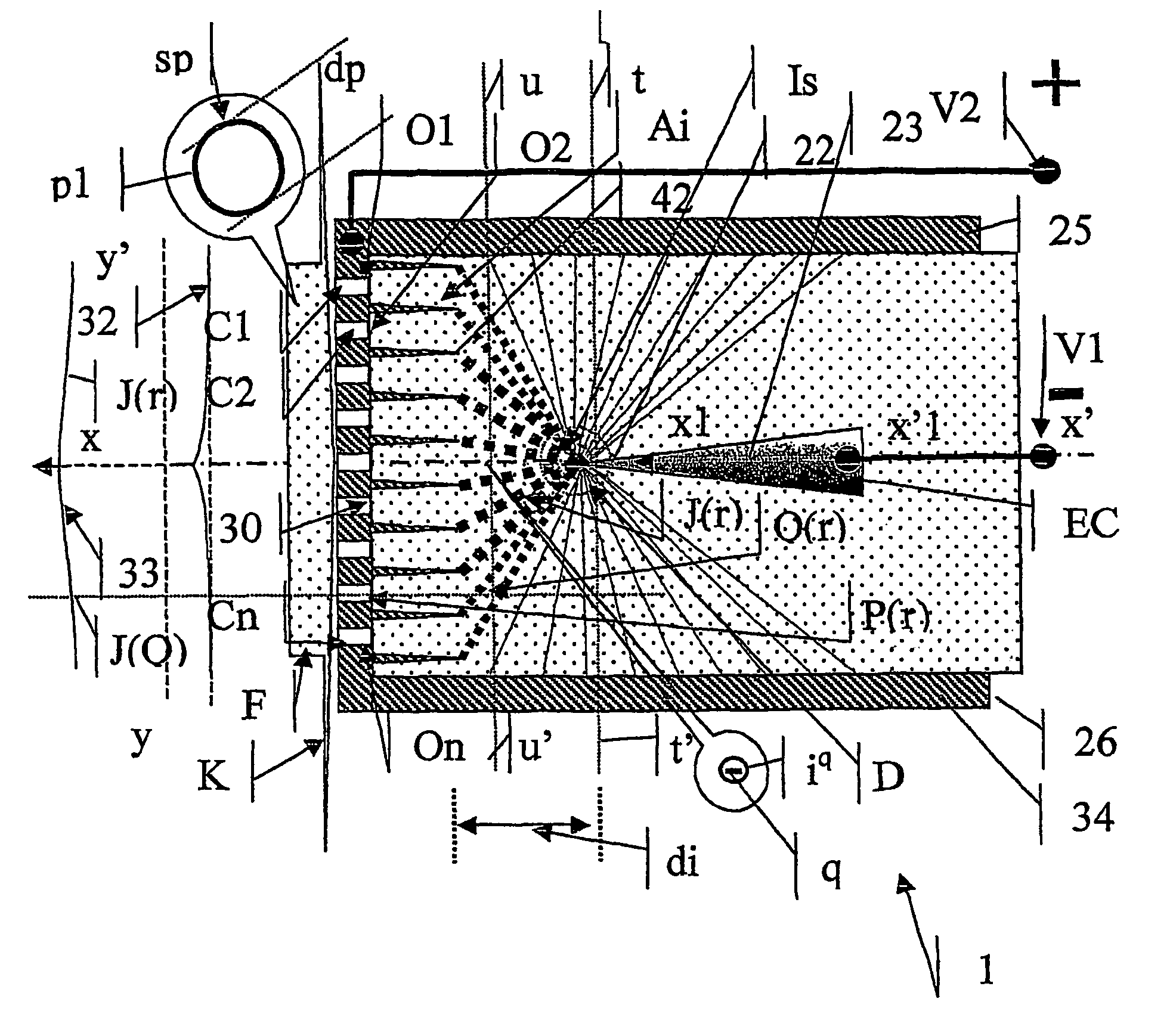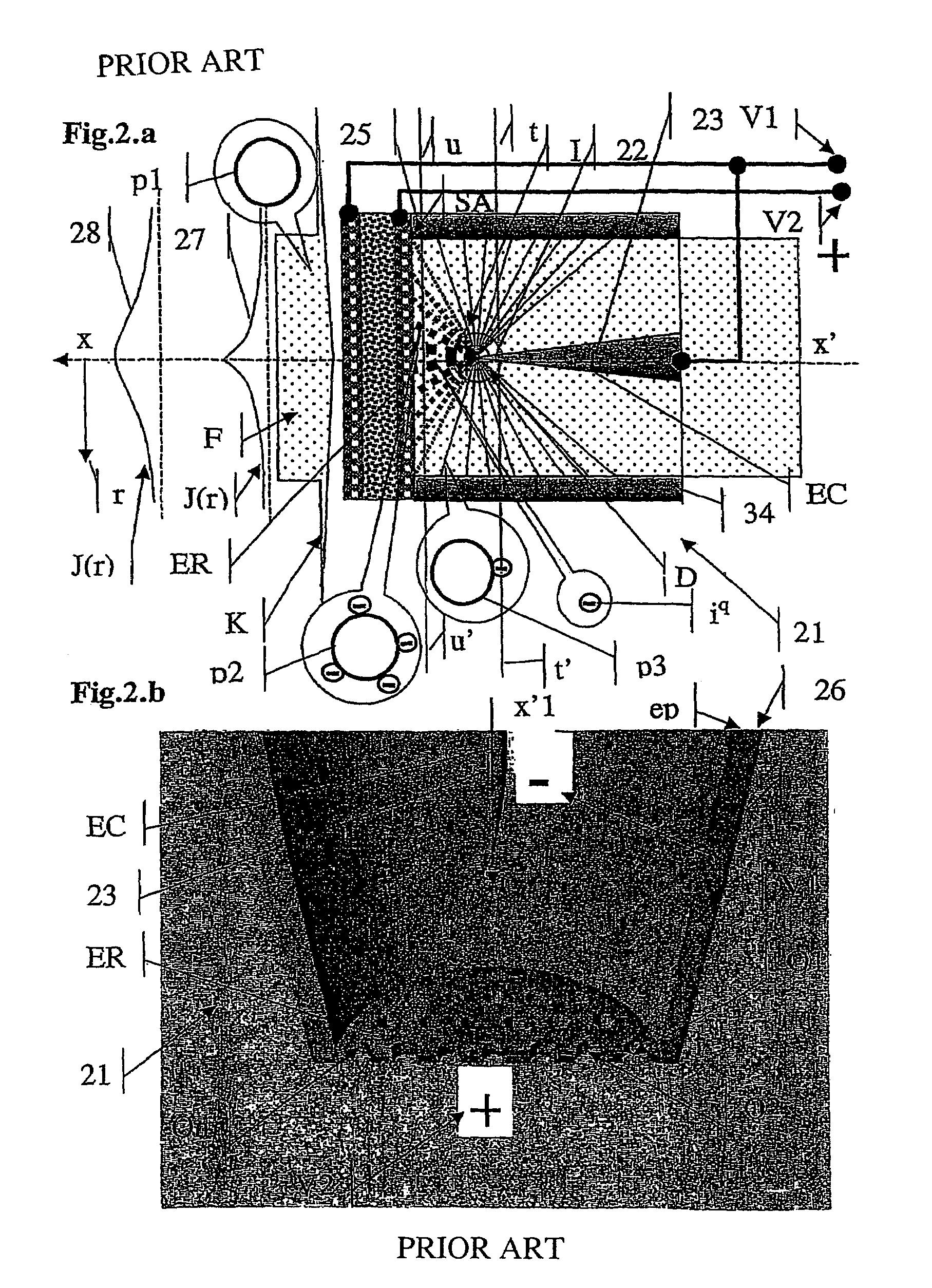Electrostatic device for ionic air emission
a technology of ionic air and electrostatic filter, which is applied in the direction of electrostatic cleaning, external electric electrostatic seperator, particle charging/ionising station, etc., can solve the problems of reducing the efficacy of electrofilters, high cost and high efficacy, and double-stage electrofilters, so as to increase the homogeneity of ionic flow
- Summary
- Abstract
- Description
- Claims
- Application Information
AI Technical Summary
Benefits of technology
Problems solved by technology
Method used
Image
Examples
Embodiment Construction
[0052]FIGS. 1.a and 1.b show diagrammatically, in section (FIG. 1.a) and in perspective (FIG. 1.b), an electrostatic ionic emission device (11) according to the prior art. The electrostatic ionic emission device (11) according to the prior art comprises a corona discharge conductive electrode (EC), subjected to a negative electric discharge potential (VI), emitting a global flow (I) of negative ions (iq). It also comprises a non-corona conductive receptor electrode (ER), subjected to a positive electric receptor potential (V2). The receptor electrode (ER) has an active face (SA) situated opposite the corona electrode (EC). It is at a distance (di) from its negative ion (iq) discharge zone (D). The space (H) separating the active face (SA) of the corona electrode (EC) is free. The receptor electrode (ER) is porous. It has a multitude of through channels of the fluid (C1, C2, . . . , Cn), traversing the receptor electrode (ER), and terminating in a multitude of orifices (O1, O2, . . ....
PUM
 Login to View More
Login to View More Abstract
Description
Claims
Application Information
 Login to View More
Login to View More - R&D
- Intellectual Property
- Life Sciences
- Materials
- Tech Scout
- Unparalleled Data Quality
- Higher Quality Content
- 60% Fewer Hallucinations
Browse by: Latest US Patents, China's latest patents, Technical Efficacy Thesaurus, Application Domain, Technology Topic, Popular Technical Reports.
© 2025 PatSnap. All rights reserved.Legal|Privacy policy|Modern Slavery Act Transparency Statement|Sitemap|About US| Contact US: help@patsnap.com



